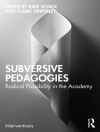Frequently students confuse literature reviews with summaries of existing research, and they can easily get overwhelmed by the amount of material they have to consider and filter as part of their review. Likewise, they don’t often realize that a considered, planned, structured and balanced argument forms the bedrock of a successful research project. Outlining what a literature review is – and isn’t – and showcasing how to use the literature to your advantage to construct a strong academic argument, this Little Quick Fix answers important questions like:
– What is the purpose of a literature review?
– How can I tell the difference between an argument and an academic argument?
– What do I need to create my argument?
– What do I need from an article to support my argument?
– How do I create a counterargument?
– How can I make sure I’m creating a strong argument and plausible counterargument?
– How can I win my argument?
Students need help over hurdles at every stage of their research project. They want simple, powerful, accessible tools that deliver results fast. They need to meet interim assessment deadlines and prove that they have successfully passed through multiple stages of their project, or need to master a stage of understanding in a learning cascade before they can proceed to the next week in their methods module.
Their supervisors are increasingly unable to help, but will still be assessing results. Students need more than You Tube.
Titles in the Little Quick Fix series offer:
· Visual, design-led learning
· Clear, structured, useful pedagogy
· A hand-holding, step-by-step approach for students who are less able, or less academically prepared by school so far
· Effective self-directed learning with DIY progress tracking
· A stand-in for the busy/unavailable supervisor
Tabela de Conteúdo
What is the purpose of literature review?
How can I tell the difference between an argument and an academic argument?
How do I begin to create to create my argument?
How do I progress my argument?
How do I convey my argument?
Why do I need a counter-argument?
How can I make sure I’m creating strong arguments?
How can I win my argument?
Sobre o autor
Dr. Thomas is currently a Lecturer (Marketing) at Aston Business School. Dr. Thomas’s primary research interests and publications encompass Brand Management, specifically the areas associated with sponsorship, fandom, co-creation, and brand community. His work has been published the European Journal of Marketing, Computers in Human Behavior, Journal of Marketing Management, Journal of Product and Brand Management, Young Consumers, Strategic Change: Briefings in Entrepreneurial Finance, and IEEE Transactions on Engineering Management. Dr. Thomas sits on the editorial boards for Journal of Product and Brand Management and International Journal of Sport Management and Marketing, winning reviewer of the year for Journal of Product and Brand Management in 2015.












